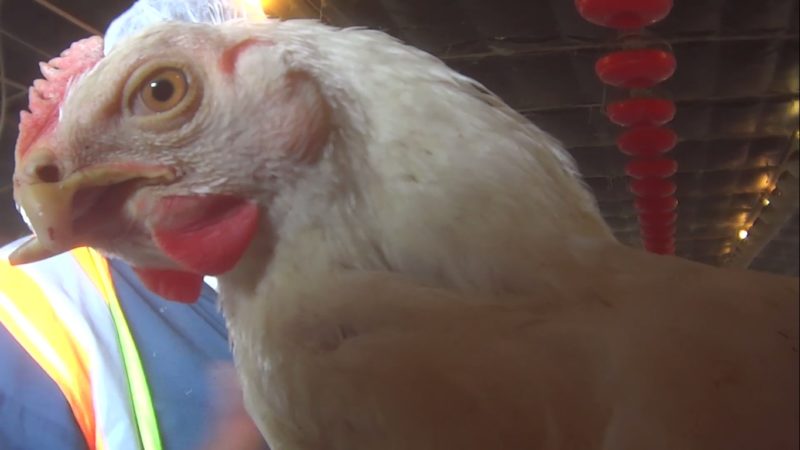The nation’s largest chicken producer, Tyson Foods, is set to construct a $320 million chicken processing plant in the town of Tonganoxie, Kansas. And residents are not happy.
According to the Associated Press, this $320 million plant, on which construction will begin this Fall, will “process” a staggering 1.25 million birds every week. Tyson plans to ultimately build a chicken hatchery and feed mill on 300 acres.
Local residents have protested the massive facility, expressing concerns for animal welfare, environmental impacts (DYK a recent report also named Tyson as the biggest polluter of the Gulf of Mexico?) — and that the community was given no notice or opportunities for discussion before the plans were approved.
As Tyson continues its fast growth, rapid growth remains a cause of suffering for the millions of birds raised and killed by Tyson each year. Bred to grow unnaturally large and fast, broiler birds can develop painful, crippling deformities and suffer heart attacks.
In order for these genetically modified birds to be kept alive long enough to breed, Tyson was using cruel “nose bones” — dull plastic rods stabbed through the nostrils of male breeders birds to limit their food intake. Compassion Over Killing’s gut-wrenching video filmed inside multiple Tyson broiler breeding facilities (the first investigative look inside broiler breeder farms) documented this cruel practice for first time on hidden camera.
In response to COK’s video, Tyson immediately ended the brutal use of “nose bones” — and Perdue and Wayne Farms quickly followed suit.
But the root of the problem — fast growth — remains. Sign & share our petition to ask Tyson to STOP starving birds.

